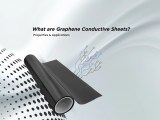
Molybdenum Coated Glass: The Invisible Powerhouse
August 21, 2025When you think of glass, you probably think of windows, drinking glasses, or your phone screen. But what if glass could do more than just let light through or be tough? What if it could actively help generate electricity or make buildings incredibly energy efficient? That’s where specialized materials, such as molybdenum-coated glass, come in.
What is Molybdenum Coated Glass?
At its simplest, molybdenum-coated glass is a standard glass sheet that has been given a skinny, invisible coating of molybdenum metal.
- The Glass: Acts as a stable, transparent, and durable base.
- The Coating: Molybdenum (chemical symbol: Mo) is a silvery-white metal known for being tough, resistant to heat, and having excellent electrical conductivity. This coating is applied using advanced techniques, such as sputtering, which essentially vaporizes the metal and allows it to condense onto the glass in a super-thin, even layer.
The result is a glass that still appears clear but now possesses special properties due to its metallic skin.
Key Properties: Why is it Special?
The molybdenum coating gives the glass some superpowers:
- Excellent Electrical Conductivity: Unlike normal glass (which is an insulator and doesn’t conduct electricity), the molybdenum coating creates a conductive surface. This is its most important property.
- Good Adhesion: Molybdenum sticks to glass extremely well. This is crucial because it often serves as a “base layer” for other, more delicate materials to be built upon, providing a strong foundation.
- High Melting Point & Thermal Stability: Molybdenum can handle very high temperatures without degrading, melting, or reacting with other materials. This makes the glass suitable for manufacturing processes that require high temperatures.
- Durability: The coating is hard and resistant to corrosion, making the final product long-lasting.
Applications: Where is it Used?
You won’t find molybdenum-coated glass in your everyday windows. It’s a high-performance
material used in advanced technology. Its primary role is almost always as a critical component in thin-film solar panels.
Thin-Film Solar Cells (CIGS Technology):
This is the star application. Many flexible and lightweight solar panels are made using a technology called CIGS (Copper, Indium, Gallium, Selenide).
How it works:
The molybdenum-coated glass serves as the *back contact* of the solar cell. It’s the first layer deposited onto the glass. Its job is to provide a highly conductive and stable foundation for the other light-absorbing layers (the CIGS) to be built upon. It’s the unsung hero that collects the electrical current generated by the sunlight and sends it out of the panel to be used.
Other Electronic and Industrial Applications:
While solar is the biggest use, its properties make it useful elsewhere:
Electrochromic Windows (Smart Windows): These are windows that can tint electronically. The conductive molybdenum layer can be used as an electrode to control the tinting process.
Display Technologies: It can serve as a base layer for certain types of flat-panel displays.
Heated Glass: Its conductivity can be used to create glass that resists fogging or icing for applications like car mirrors or aircraft windows.
Benefits: Why Choose It?
Using molybdenum-coated glass offers several advantages, especially in solar technology:
- Performance: It creates an ohmic contact with the CIGS layer, meaning electricity flows through it with minimal resistance, making the solar cell more efficient.
- Reliability: Its excellent adhesion and thermal stability prevent the solar cell layers from peeling or degrading over time, ensuring a longer product lifespan.
- Versatility: It enables the creation of flexible solar panels. Because the molybdenum layer is so thin, the entire solar cell structure can be made on flexible glass or even metal foils.
- Efficiency: As a back reflector, it can help bounce unabsorbed light back into the solar cell, giving it a second chance to be converted into electricity.
So, although you can’t see it, molybdenum-coated glass is a fundamental material driving the shift to renewable energy. It’s a perfect example of how a small, invisible innovation can have a significant impact on building a more sustainable future.


